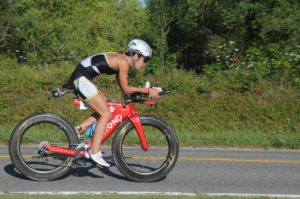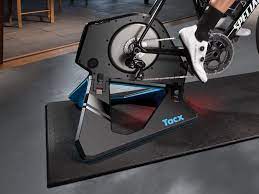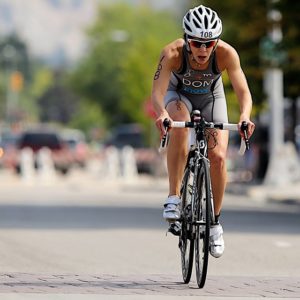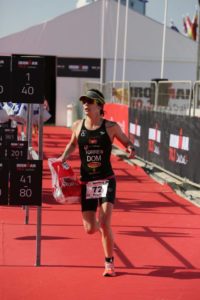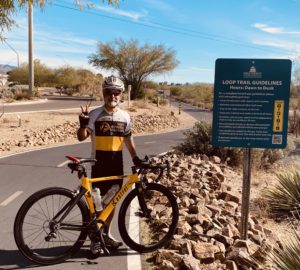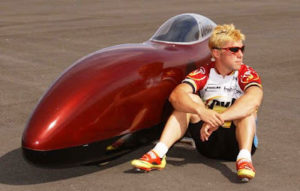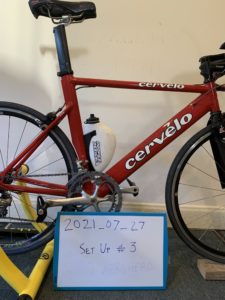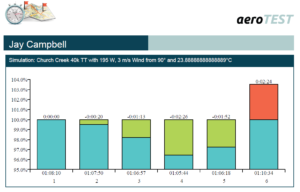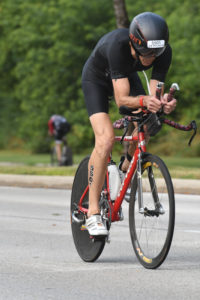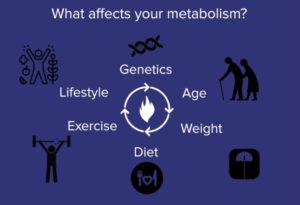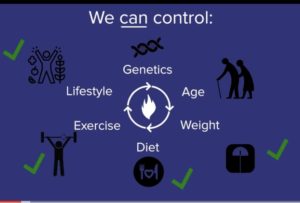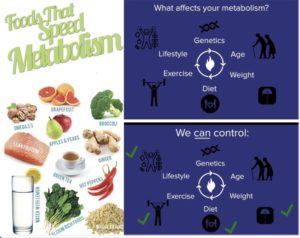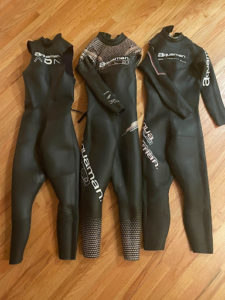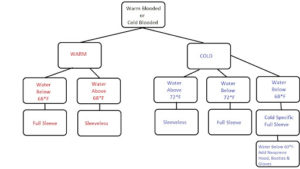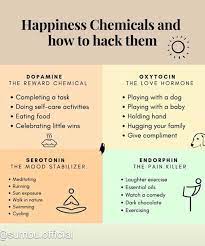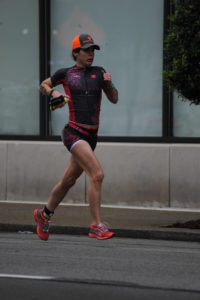By Raquel Torres
“Fear is the biggest disability of all. It will paralyze you more than being in a wheelchair”. Nick Vujicic.
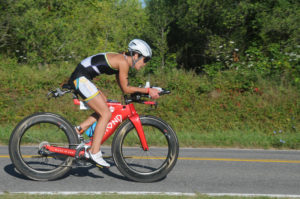 Tough people handle difficult situations with strength and grace. They stay positive instead of letting criticism rule their day. Being mentally tough is essential to staying positive, happy, and moving forward. For many of us it doesn’t happen overnight, it takes practice and time; after consistent work we become braver not less afraid.
Tough people handle difficult situations with strength and grace. They stay positive instead of letting criticism rule their day. Being mentally tough is essential to staying positive, happy, and moving forward. For many of us it doesn’t happen overnight, it takes practice and time; after consistent work we become braver not less afraid.
Coming back from many life setbacks, personal and in triathlon as a professional elite, I dedicated many years researching about mental strength and how to improve it, learning from many different authors, doctors, scientific studies, and experts in several areas like psychology and sports medicine, so I can improve myself and help others better as a coach.
First, we decide to be brave then we become braver, being courageous is a personal constant decision.
Here is a recollection of recent scientific studies and data related to this topic from doctors and elite athletes, also practices and tips that can help us to have better life experiences, no matter who you are, what you do or want to do.
1.Wake Up! You are not your thoughts, you become what your most predominant thoughts are, sometimes our thought patterns are not even ours, they are from the environment, society, friends, family etc. Tip: with some practice we can change and create new healthy thought patterns.
2. Guard your thoughts, you must become aware about what you think, where your thoughts go, your life follows. Certain thoughts should never be in your head for more than 2 seconds. Tip: replace weak thoughts like: “I can’t, I’m tired,” or “I’m bored” with: “I am strong”, “I got this!”, “I have what it takes!”.
3. Take responsibility. Have strong boundaries. Are you spending too much time and energy with fearful, negative, lazy people or someone with a bad attitude? Cut the time, attention or cut them off from your life. Tip: a practical way to guard or track your energy and thoughts that I heard some use, is to have an elastic band on the wrist and every time you catch a negative thought or listen to a negative comment, pinch yourself and replace that thought with a positive one, or with a ring and turn it around your finger or touching mala beads can replace the elastic band with the same mental effect of switching thoughts to positive.
4. Get out of your comfort zone and fix your problems. Patience is bitter, but its fruit is sweet. When life is hard, we want comfort, not change. Those who have learned the secret of being mentally tough have learned that sometimes comfort now can mean pain later, whereas a little discomfort now can yield a big reward in the future.
“Courage is grace under pressure” -E. Hemingway.
5. Confront your fears and break it down to identify your triggers. For example, make a mental list or write it down, dividing the scenario into little pieces, for example in triathlon, if you fear open water, write down in detail what you are afraid of: dark water, animals, deep waters, waves etc. Tip: with the adequate safety protocol, start from the shore, and build your confidence up while training in that environment, spend time with others who are braver than you or have extensive experience in the area that you want to get better at or mentally stronger, apply visualization techniques. Keep in mind that animals are more scared than you, because we humans are so creepy. 🙂
6. Be accountable and careful. Whatever you are working towards, have someone like a coach that can hold you accountable in areas you are likely to give up. Tip: there is a time for sharing your goals to help with your accountability, and other times you’re better off keeping them to yourself. You just need to be strategic and rational in your decision. Sometimes a “friend”, a family member, doctor, partner, psychologist, teacher, no matter the role or the relationship with you, some people are secretly frustrated with themselves and sometimes intentionally or not, they’ll try to sabotage, discourage, or distract you from your personal goals or aspirations.
7. Pump up your confidence. Toughness and confidence go hand in hand. Being tough comes down to the choices you make about handling any given situation. Having confidence in yourself makes it possible to make the right choice and follow through with it. Tip: remember/visualize times when you were brave and accomplished something.
8. Don’t take opinions personal. You can be a good person, a decent, good hearted human and have thick skin, don’t worry about the little things, comments, or opinions. If you’re going to be tough, you can’t let a negative comment ruin your day. Tip: Realize and keep in mind the difference between truth and opinion. Focus on what you have total control: your mind, your actions.
“An entire sea of water can’t sink a ship unless it gets inside the ship. Similarly, the negativity of the world can’t put you down unless you allow it to get inside you.” — Goi Nasu
9. Consistent rest can make you tougher. To be tough does not mean to be masochistic or a brutal person. You need to be tough when needed, the situation will tell you what mental attitude is the best or is required, the sacrifices to accomplish a goal can be personal and sometimes circumstantial. Example: not everyone needs to wake up at 5:00 am to work or train “hard”, if your responsibilities requires you to stay up late and you do not need to wake up until 7:00 am, with those 2 extra hours of sleep you can have a better-quality rest; which is an essential ingredient to have enough energy to be tough and overcome any challenge. The saying “the early birds eat the worms” has its exceptions. Never look for validation or attention from others on what is working hard or being tough for you, because we all have different pain thresholds, challenges and lifestyles. To be tough is a tool that we need to be diligent on how, when and what is mentally required. Some people spend their lives and energy trying to “show off” to someone or others on how “hard they work” or how “tough” they are, this is very common, and not surprising when they end up overdoing stuff or doing things that can be counter-productive in the long term with achieving good results, happiness and personal satisfaction. Tip for endurance sports: in the podcast about the book “How bad do you want it” by Matt Fitzgerald he explains how studies show now that elite endurance athletes can get tougher applying some techniques while training, like listening to music and the consumption of moderate caffeine, can bring the benefit of improving the “perception of effort” while training (working harder while feeling less hard) and with time reap the benefits of becoming tougher, with an adequate training, applying the 80/20 Rule (Total Training Volume=80% Easy training +20% Intensity training). Matt also mentions about how often recreational or amateurs athletes make the mistake of over training, getting in that security blanket mindset that “hard work pays off”, “that’s true and it pays off until some extend in endurance sports” he comments, most elites athletes have the capacity to take a day off and take the easy days easy, the opposite of most amateurs or recreational athletes.
10. Engaging in the activity makes you tougher. When athletes engage 100% in the activity the body increases the number of secreted Endorphins within the brain and nervous system, these are the natural Painkillers-hormones (causing an analgesic effect). Scientific studies show that athletes that have a total engaging mentality in their activity or goal, feel less pain while doing the same exercise with the same effort compared with other athletes that mentally try to distract themselves from the activity. Ex. watching a movie or reading a book while exercising or trying to distract or think of other things rather than the goal or activity or try to “avoid the pain”.
Note: In the Book “how bad do you want it?” This method of engaging in the activity can be the opposite when training and during an event, race or test. For example, studies show that athletes or students that engage in the activity (focusing on inside feelings) while they train or practice make them improve the perception of exertion and pain tolerance (by increasing endorphins creation) on the other hand during a math test, event or a race if they focus on external factors, rather than inside feelings, the athletes have a more pleasant experience and better results.
11. Prepare your mind for the upcoming activity as a tough one and that you will be tougher than the activity. Tip: Resent scientific studies show that athletes that visualize the event as a tough one, feel less pain or discomfort than the ones who are expecting an easy experience.
12. Pain is inevitable, suffering is optional. While pain is what happens to us, suffering is what we do with that pain. While changing our perception of this concept may be difficult, it is possible. We can avoid or lessen our actual suffering based on what we choose to do with the pain we experience. Tip: keep the pain in the body and relax your thoughts with your favorite mantras.
13. Get active and follow through with your goals. If you want to be tough, be willing to put in the time and effort it takes to accomplish your goals. Tip: keep in mind that just “having the information” does not do the work, just reading or listening about other stories alone will not make you tougher, you need to put in the work, nobody will do it for you.
14. Be selective. Remember that some societies, communities, governors, religions, and the most dangerous humans in world history use fear as a tool of controlling others or the masses. Tip: stay out of that mentality, protect your mind and be very selective on what information you allow in your mind, what you choose to believe, and what you need to ignore.
15. Forgive yourself. Pick yourself up after making a mistake. Tough people use their mistakes as a tool for learning how to do better next time. Do not get in a trap of staying in low energy for a long term or feeling sorry for yourself. Tip: Learn and reflect after a mistake or failure and turn the page asap and come back wiser and stronger.
 “A smooth sea never made a skillful sailor”
“A smooth sea never made a skillful sailor”
Toughness can only be acquired through experience, every challenge you must face gives you a chance to get tougher. What is the story you’re telling yourself? That belief is the key to being mentally tough.
Sources: The Physical Performance Show and Matt Fitzgerald – Best-selling Author ‘How Bad Do You Want It?’
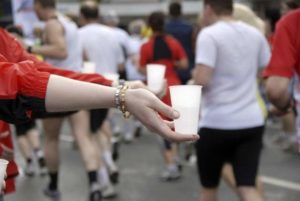 What if Volunteers weren’t there? No kayak to rest on? No intersection coverage to stop traffic? No one to hand you nutrition or hydration? No one to cheer you on when you’re slowing down? No one at the finish line to keep you from crashing or to provide medical support if needed? In my opinion that would make racing just another training day and we’d never know how far or how fast we could really go if we had support.
What if Volunteers weren’t there? No kayak to rest on? No intersection coverage to stop traffic? No one to hand you nutrition or hydration? No one to cheer you on when you’re slowing down? No one at the finish line to keep you from crashing or to provide medical support if needed? In my opinion that would make racing just another training day and we’d never know how far or how fast we could really go if we had support.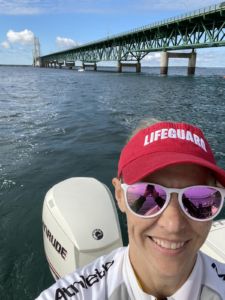 the experience will be big, like the time I volunteered to lifeguard a swim under the Mackinac Bridge! What a beautiful way to spend my morning while giving others the chance to check something major off their bucket list. Sometimes the experience will be simpler like a kayaker getting to watch the sunrise over a lake or a lone swimmer who wouldn’t have finished without your encouraging words. Or like handing out water at the aid station for that last athlete who’s working their tail off to make the cutoff. Each of these experiences and thousands of others like them will renew your love of your sport.
the experience will be big, like the time I volunteered to lifeguard a swim under the Mackinac Bridge! What a beautiful way to spend my morning while giving others the chance to check something major off their bucket list. Sometimes the experience will be simpler like a kayaker getting to watch the sunrise over a lake or a lone swimmer who wouldn’t have finished without your encouraging words. Or like handing out water at the aid station for that last athlete who’s working their tail off to make the cutoff. Each of these experiences and thousands of others like them will renew your love of your sport.





